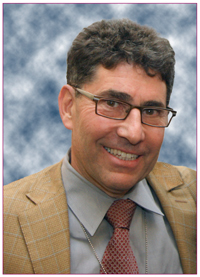
The Kass laboratory has had a long standing interest in investigating the mechanistic basis of cardiac rhythm disturbances (arrhythmia) that can be caused by dysfunction of proteins called ion channels (channelopathies), which normally regulate the heart’s electrical activity. Mutations in genes coding for ion channels, or ion channel associated proteins, place mutation carriers at risk of sudden cardiac death in these disorders.The Long QT Syndrome (LQTS) is now the most thoroughly studied cardiac channelopathy. In individuals affected by LQTS, the electrocardiogram, which monitors the heart’s electrical activity, is altered such that a select section of the recorded signal, called the QT interval, is prolonged compared to healthy individuals. This condition is known to increase the risk of developing arrhythmia in a gene mutation-dependent manner, and risk of arrhythmia and sudden death as well as therapeutic approaches to manage the disorder are mutation dependent. Studies of individual mutated ion channels, using expression systems in non-cardiac cells, have provided great insight into mechanisms of and specific therapeutic strategies to manage LQTS, but - particularly in cases in which patient genetic backgrounds are complex-these approaches are not always effective. Moving this field forward has required new approaches that will allow studying ion dysfunctional channel activities in a cellular background that duplicates that of the cardiac cells of patients being treated.
A novel approach that is very promising is to derive cardiac lineage from a special type of stem cells, induced pluripotent stem cells (iPSCs), that are generated after molecular manipulation of adult somatic cells, such as skin cells from the very patients presenting with the disease. This technology presents many advantages: i) the surgical procedure required to collect somatic cells is simple and minimally invasive (skin biopsy); ii) human cardiac cells derived from skin cells can be produced in large amount; iii) the genetic background of these cardiac cells is specific to the individual whose skin was biopsied, therefore allowing their use for personalized medicine. The Kass laboratory has begun using this approach as a novel in vitro platform to investigate mechanisms underlying LQTS in a pediatric patient and therapeutic strategies to treat the problem. This work is truly translational in that in vitro experiments carried out in the Kass lab have been used not only to determine how the arrhythmias are initiated but also to understand therapeutic regimens used to prevent them. This approach is novel and has been carried out as a “proof of concept” approach to determine whether information gained from the iPSC-derived cardiac cells can be used to understand then ultimately change clinical management of an inherited disorder in a patient-specific manner. In multi-investigator collaboration, the Kass lab generated cardiac cells derived from skin cells from family members of a LQTS patient whose heart was found to express two different types of abnormal ion channels: i) a mutant sodium channel that can underlie the disease phenotype and ii) a mutant potassium channel that may complicate the disease phenotype and also alter the patient’s response to potential therapeutic agents. The in vitro work revealed that the LQT phenotype observed in the patient was likely to be caused by the mutant sodium channel without any additional contribution of the mutant potassium channel to the disease. But, in addition, the in vitro studies revealed that the arrhythmic activity caused by the inherited mutation was extremely sensitive to heart rate such that if it were possible to increase the patient’s heart rate while administering a drug identified in the in vitro studies, control of arrhythmic activity was predicted to be greatly improved. These predictions were shown to correlate very closely with an altered clinical regimen in which arrhythmic activity in the patient was markedly reduced using a combination of increased heart pacing via a previously implanted pacemaker and administration of a single drug, mexiletine, which had been profiled in the iPSC-cardiac cells. This study in the Kass lab constitutes a proof of concept that human cardiac cells produced by iPSCs technology can be used for direct investigation of the cellular physiology and pharmacology of mutations that cause LQTS within a background that reproduces the complex genetic background of a patient and, as such, is the first time patient specific iPS cells have been used in this manner. The lab is continuing to build upon this technology to reduce turnaround times both for the derivation of patient specific myocytes from other LQTS patients and to reduce turnaround time for drug screening such that this platform may be used to improve patient care in cases in which complex patient genetics contributes to resistance to other approaches.
page 1 | 2 | 3 | 4 | 5 | 6 | 7 | 8 | 9 | 10 | 11 | 12 |> NEXT
> download 2013 newsletter PDF
> download 2009 newsletter PDF
> view 2007 newsletter

